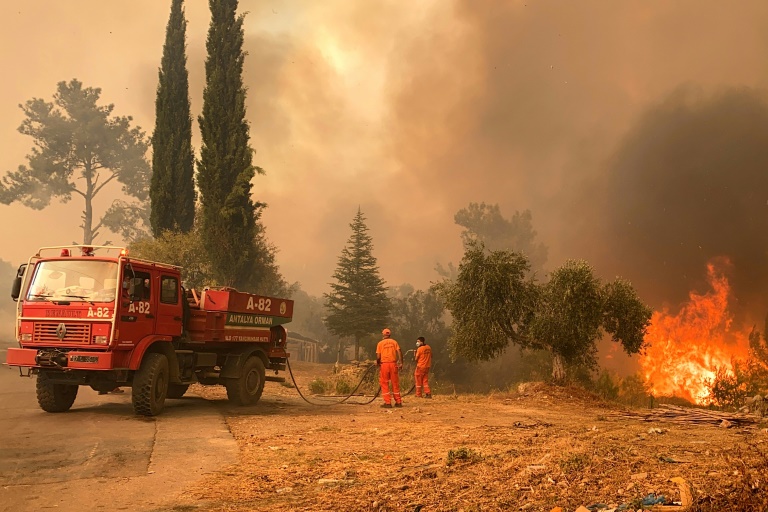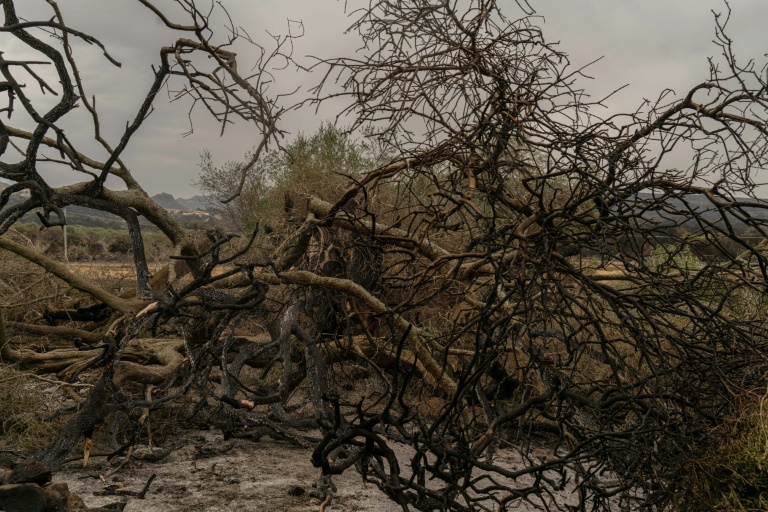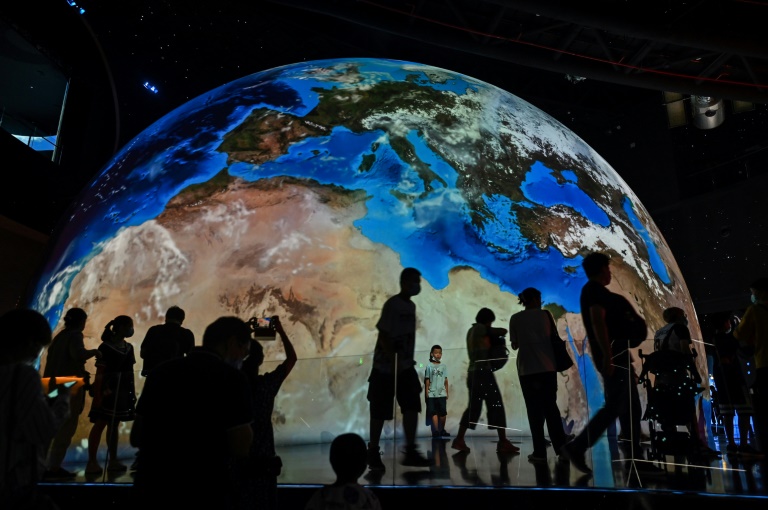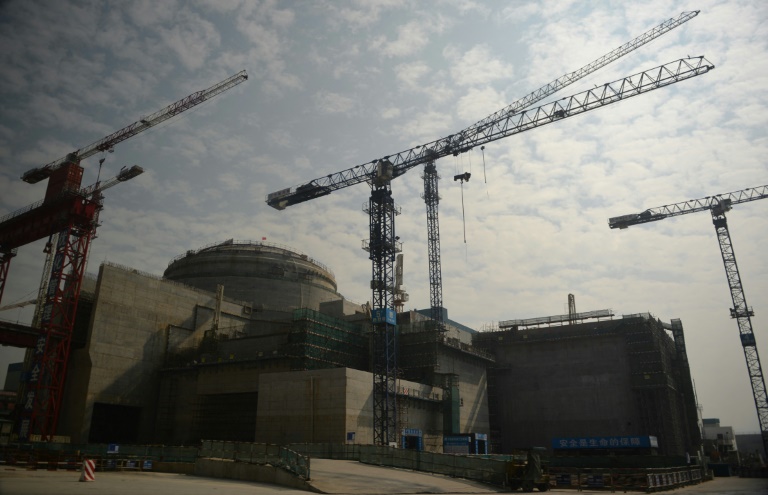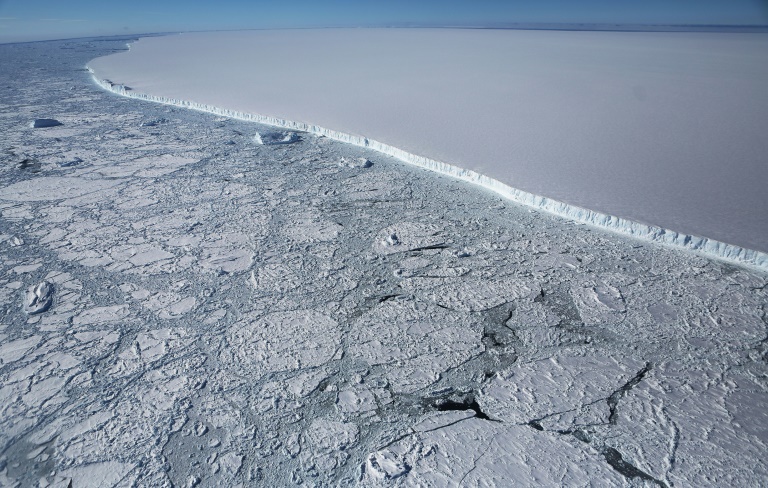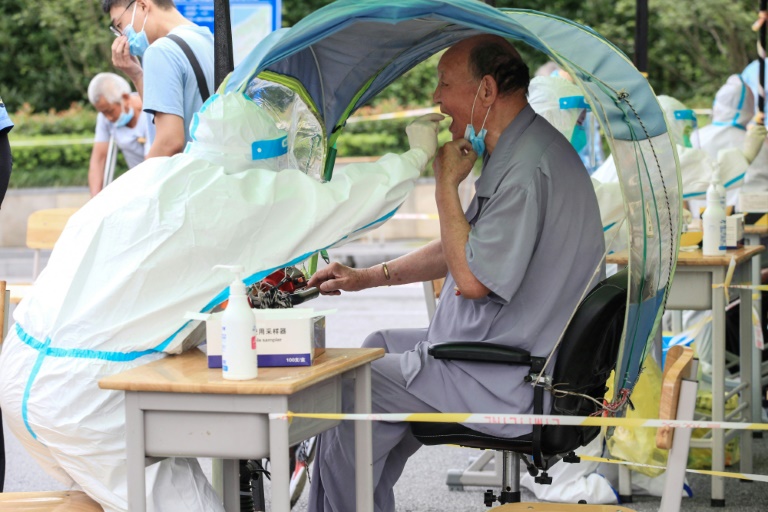Deadly wildfires deal new blow to Turkish tourism
Turkish firefighters made progress Friday containing deadly wildfires that forced the evacuation of entire villages and Mediterranean coast hotels already reeling from the shock of the coronavirus pandemic.
Blazes that erupted Wednesday to the east of tourist hotspot Antalya on Turkey’s scenic southern shores have officially killed four people and injured nearly 200.
But they have also threatened to scare off tourists who had only just started to return to Turkey in what President Recep Tayyip Erdogan had hoped would be a boon for the developing country’s fragile economy.
The soaring flames turned summer skies blood orange over luxury hotels and villages dotting rolling hills that have been parched by another dry summer.
They had spread by Thursday evening to the Aegean Sea on Turkey’s western coast and spanned a region stretching 300 kilometres (185 miles) and covering most of the country’s top resorts.
Local resident Gulen Dede Tekin came to a five-star hotel in the coastal city of Marmaris on Thursday morning and at first thought nothing of the fires raging beyond the hills.
“In the evening, we realised how serious things were when they cut off the electricity and the ventilation at the hotel,” Tekin told AFP.
“This morning, we woke up to a rain of ash.”
– Arrests –
The government said 57 of the 71 fires had been contained or entirely put out by Friday.
“The situation is improving in all active fires,” Agriculture Minister Bekir Pakdemirli told reporters during a visit to the affected region.
But he also confirmed that Turkey no longer had a firefighting plane in its inventory and was only in the process of acquiring one under orders from Erdogan.
Russia has sent three giant aircraft and Turkey’s historic rival Greece — at odds with its neighbour on a wide range of disputes — said it was “ready to help”.
Turkey’s regional allies Ukraine and Azerbaijan also announced they were sending planes and other help.
The blow the fires threaten to deal to Turkey’s tourism-dependent economy and the admission that the country had no firefighting planes has put Erdogan’s government under pressure.
His office has officially blamed arson and unspecified “attacks”.
Erdogan told reporters after Friday prayer that his opponents were trying to score political points by questioning the government’s preparedness for the crisis.
“While our country is burning, they are playing politics,” he said.
Foreign Minister Mevlut Cavusoglu announced the arrest of five people on suspicion of starting one of the blazes.
“Who started these fires,” he asked in televised comments during a visit to Manavgat. “We, as well as our citizens, have our suspicions.”
But the blame on arsonists — which government media has linked to banned Kurdish militants waging an insurgency against the Turkish state — has created a febrile atmosphere in some of the most badly damaged regions.
Turkish television showed an angry mob of a few dozen men being restrained by the police on Thursday night as they tried to attack two locals they held responsible for blazes in the town of Manavgat.
The private DHA news agency said two children — one eight and the other 10 years old — had also admitted under questioning in the presence of their teacher that they accidentally started one of the fires by burning their books.

